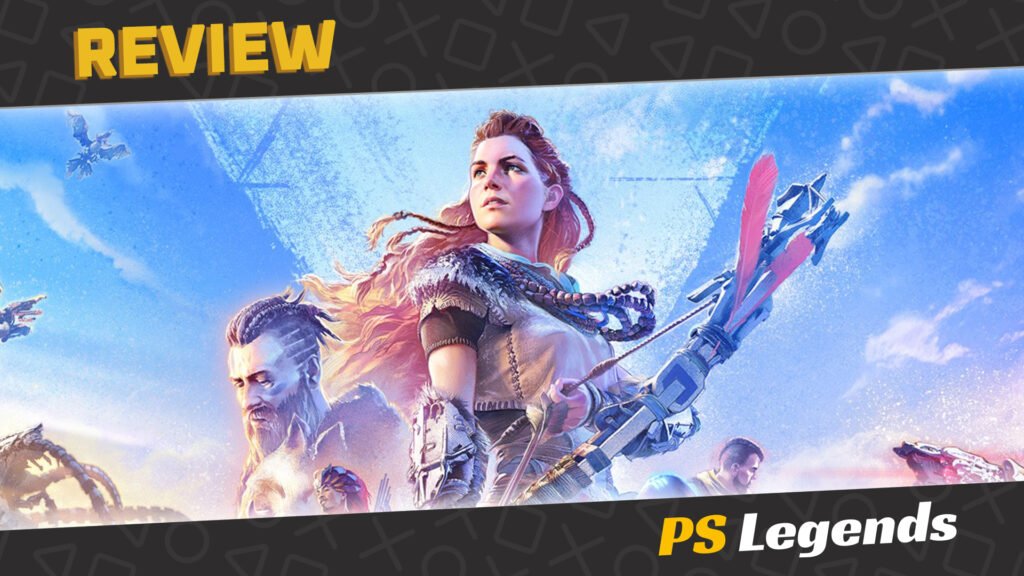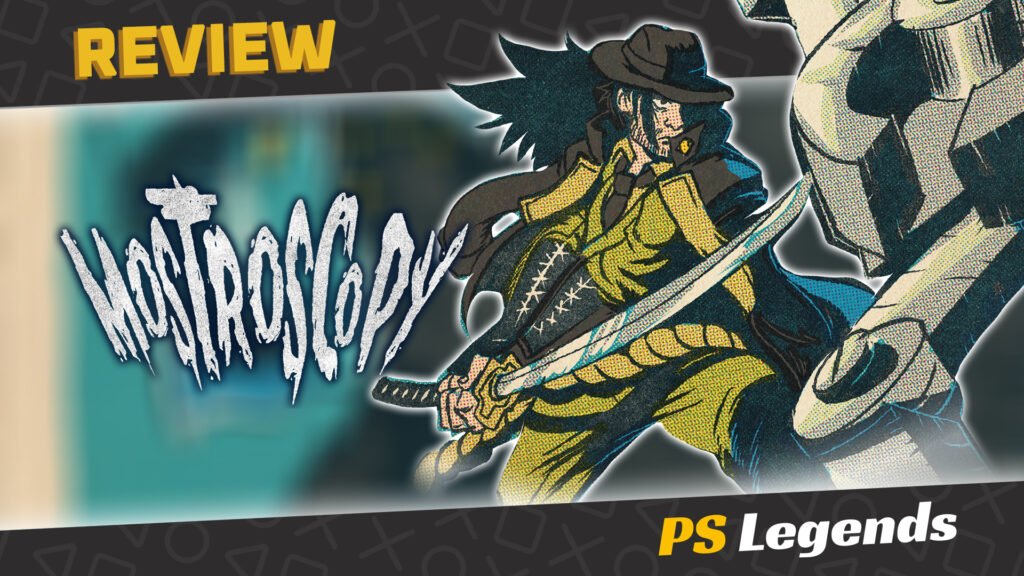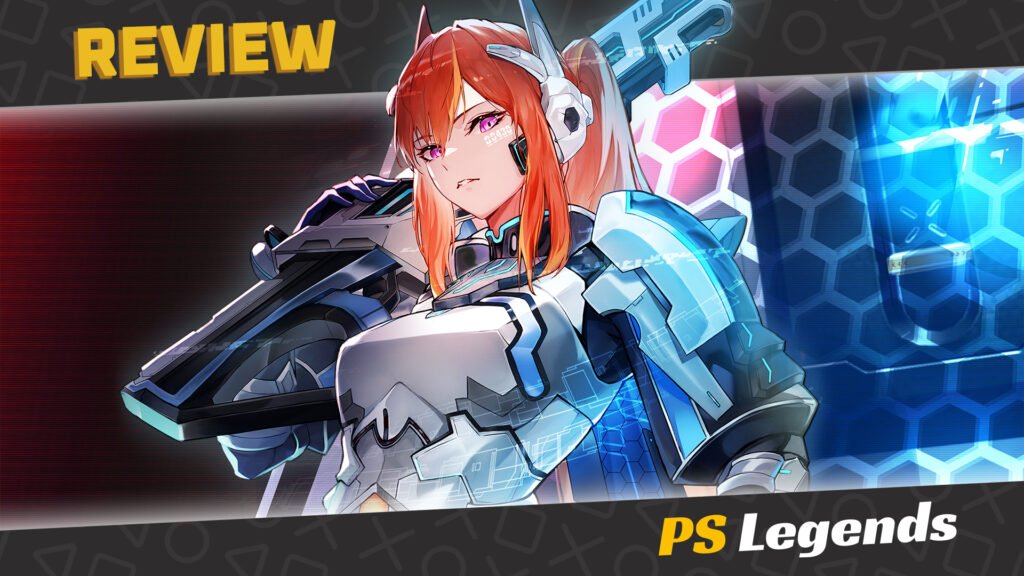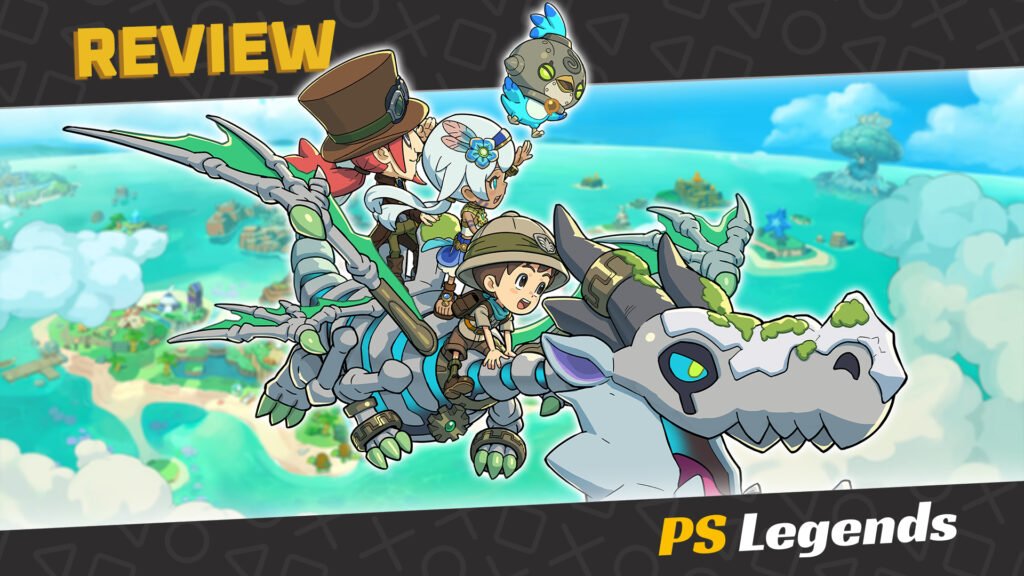2017’s photorealistic narrative masterpiece, Horizon Zero Dawn, is a game I’ve wanted to talk about for quite some time, and as we get into the details, my reasons for doing so should be rather self-explanatory. The problem is, we’re rather late to the party with this one. 2017 was a while back and the vast majority of PlayStation gamers have already had ample chance to pick-up, try, and love the game.
Also, as part of PlayStation’s generous Play At Home initiative, Horizon Zero Dawn was one of the games made available totally free of charge for a period during the 2020 COVID-19 pandemic, and there’s not much point highlighting the pros and cons of a game that folks can try for free themselves, no strings attached. Fortunately, 2024 would bring myself and everyone else the chance to re-immerse ourselves in the game all over again, now with a fresh lick of paint in the form of a tasty new remaster.
Introduction
Horizon Zero Dawn Remastered is finally here, returning on 31st October 2024. Even if an already-beautiful game getting a full-blown remaster less than eight years after its initial release might have triggered a few eye-rolls, taking the time to replay the post-apocalyptic epic might just reveal more than a gentle refresh of make-up.
Although Horizon Zero Dawn Remastered is being sold as a full 50GBP/50USD package for those who don’t own the original, those who do have a copy already can pay just 10GBP/10USD to upgrade to the remaster. This is the same strategy that The Last of Us Part 2 Remastered uses, which also offers existing owners a $10 upgrade. So, is $10 worth it for the remaster of Aloy’s debut adventure?
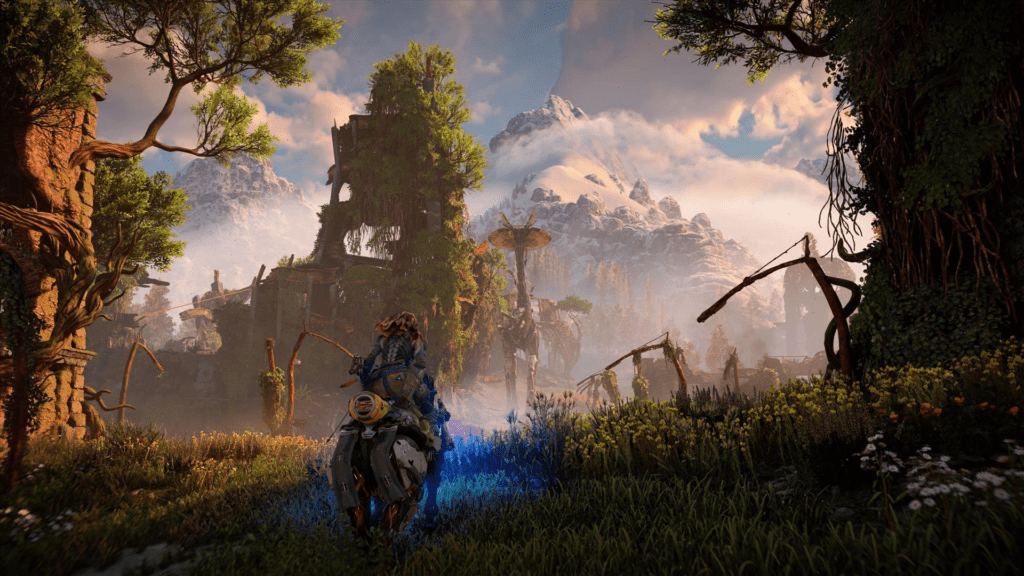
Story
The story is set in a post-apocalyptic United States in the 31st century, between the states of Colorado, Wyoming, and Utah. Humans live in scattered tribes with varying yet usually primitive levels of technological development. Their technologically advanced predecessors are referred to as the “Old Ones.” Four active tribes are prominently featured: the Nora, the Banuk, the Carja, and the Oseram.
Large robotic machines dominate the Earth. For the most part, they peacefully coexist with humans, who occasionally hunt them for parts. However, a phenomenon known as the “Derangement” has caused machines to become more aggressive towards humans, and larger and deadlier machines have begun to appear.
The Nora are fierce matriarchal hunter-gatherers who live in the mountains and worship their deity, the “All-Mother.” The Carja are an empire of desert-dwelling city builders who worship the Sun. The Banuk consists of wandering clans made up of hunters and shamans who live in the snowy mountains of Wyoming’s Yellowstone National Park and worship the “blue light” of the machines. The Oseram are tinkerers and salvagers known for their advanced weapons, metalworking, brewing, and talent as warriors.
Aloy is cast out from the Nora tribe at birth and raised by a fellow outcast named Rost. As a child, Aloy obtains a Focus, an augmented reality device that gives her special perceptive abilities. Aloy becomes curious about her origins and is told by Rost that if she wins the Proving, a competition to earn the right to become a member of the Nora, the tribe’s Matriarchs might reveal this information. Aloy spends some years training in combat and survival under Rost’s instruction.
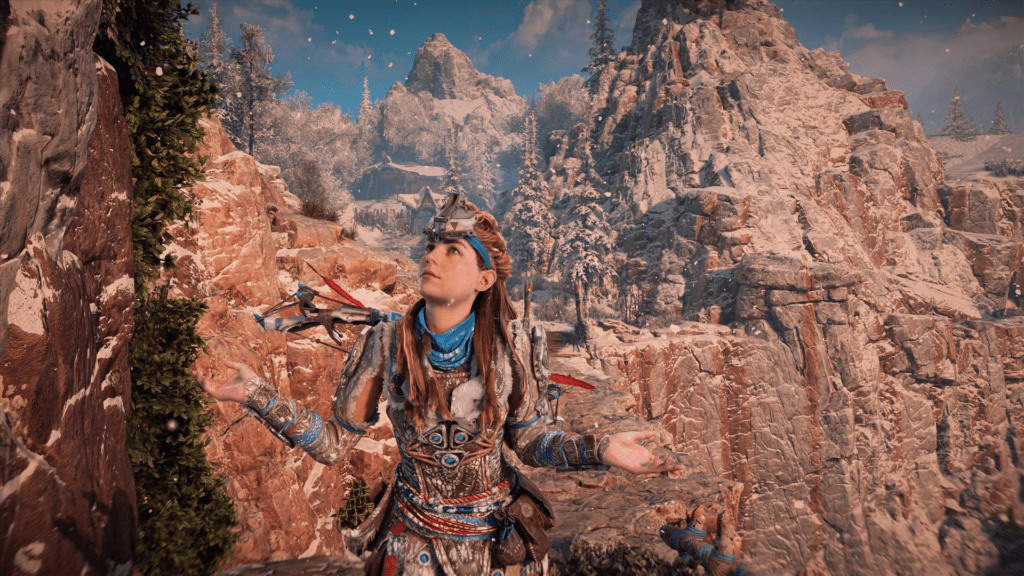
After coming of age, Aloy participates in the Proving; she wins the competition, but masked cultists attack the Nora. Rost sacrifices himself to save Aloy from their leader, Helis. When Aloy awakens, the Matriarchs explain that Aloy was found as an infant before a sealed door within the Nora’s sacred mountain and that these suspicious origins were the reason for her being an outcast. The Matriarchs name Aloy a “Seeker,” allowing her to leave their lands in pursuit of the cultists.
Aloy eventually learns that the cultists are part of a splinter Carja faction called the ‘Eclipse’ and that Aloy was targeted due to her resemblance to an Old-World scientist named Elisabet Sobeck. Aloy locates the ruined corporate campus of Faro Automated Solutions and discovers that the Old World was destroyed nearly a thousand years ago after Faro lost control of its automated peacekeeper military robots.
The robots, which could self-replicate and consume biomass, overran the planet and engulfed the biosphere, stripping Earth of life. Zero Dawn, a project spearheaded by Sobeck, was initiated to create an automated terraforming system to eventually deactivate the Faro robots and restore life to Earth over a period of centuries.
Aloy is contacted by Sylens, a secretive Banuk figure interested in uncovering the fate of the Old Ones. Aloy learns that Sobeck was sent to a decommissioned Orbital Launch Base to complete Zero Dawn, located under the Citadel, the center of Eclipse power. Inside the base, Aloy will learn the truth about Zero Dawn.

Gameplay
Horizon Zero Dawn Remastered’s gameplay remains unaltered from the first edition. The game is an action role-playing game played from a third-person perspective. Players take control of Aloy, a hunter who ventures through a post-apocalyptic land ruled by robotic creatures. Aloy can kill enemies in a variety of ways: shooting them with arrows, setting traps such as tripwires using the Tripcaster, using explosives, and also by using a spear.
Machine components, including electricity and the metal they are composed of, are vital to Aloy’s survival; she can loot their remains for crafting resources. Ammo, resource satchels, pouches, quivers, antidotes, health potions, and traps can all be crafted. Weapons also have modification slots for dealing more damage.
Aloy wears a Focus, a small earpiece that scans machines to determine their susceptibilities, identify their location, their level, and the nature of loot they will drop. Exhibiting the behaviour of wild animals, some machines are inclined to move in herds, and others, with the ability to fly, do so in flocks. Unless hacked with the Override Tool, or sufficiently hit with corruption arrows, machines do not exert aggressive force against each other. Aloy also engages in battle with human enemies, such as bandits and the Eclipse cult.
Aloy can dodge, sprint, slide, or roll to evade her enemies. Hiding in foliage to ambush nearby enemies can ensure instant takedowns. Swimming can help reach enemies stealthily or places otherwise unreachable on foot. Aloy is able to hack a selection of machines with the Override Tool, some of which can be turned into makeshift mounts. Explorable ruins called ‘Cauldrons’ unlock additional machines to override.

The skill tree has three categories: ‘Prowler’ concerns stealth, ‘Brave’ improves combat, and ‘Forager’ increases healing and gathering capabilities. Upgrades in each category result in more adept use of the skills learned, with ‘Prowler’ leading to silent takedowns, ‘Brave’ to aim accuracy with bows in slow motion, and ‘Forager’ to more efficient item storage and usage. Aloy earns experience points from individual kills and by completing quests.
The game has a seamless open world with a day-night cycle and dynamic weather system. The map is composed of forest, jungle, desert, and snowy mountain regions. Mountainous terrain is traversed with the employment of parkour, and aided by the use of zip-lines. Corrupted Zones constitute areas that heighten difficulty and are populated by corrupted machines that behave more aggressively.
To uncover more of the map, Aloy must scale large giraffe-like machines known as ‘Tallnecks’. Save points and fast-travel can be accessed by interacting with campfires, once discovered. The quest structure unfolds to accommodate interaction with other tribes, while the main story covers key locations, and a dialogue wheel is used to communicate with selected NPCs.
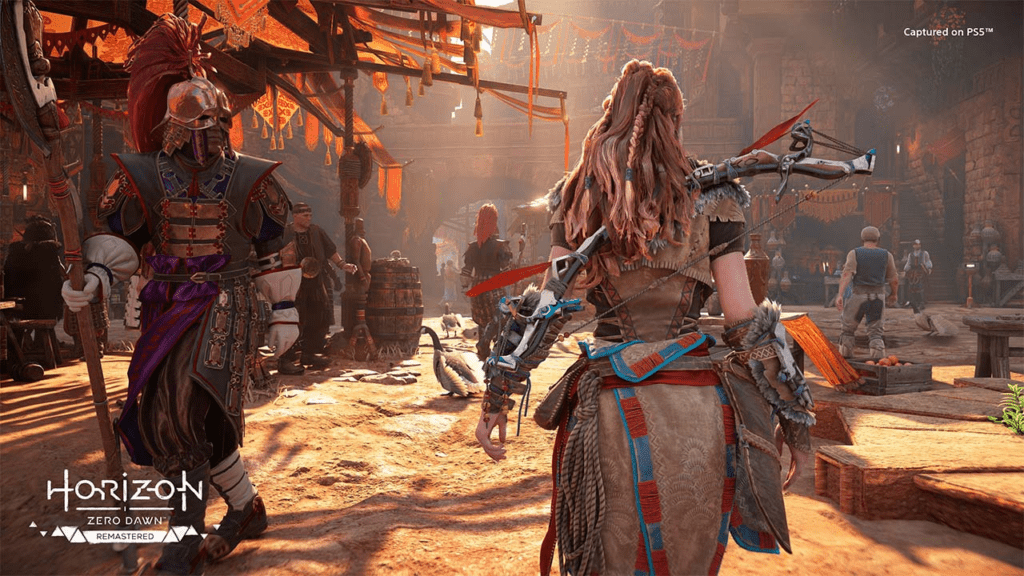
Graphics/Sound
Some may say that a game as beautiful as Horizon Zero Dawn doesn’t need a visual overhaul, and perhaps they’re right, but that hasn’t stopped PC porting specialist Nixxes from thoroughly reworking the engine and revitalising it with bold new direction. The two biggest improvements are massive upgrades to the lighting and textures. Everything looks so much more cinematic now, in line with the art direction featured in sequel Horizon Forbidden West.
For a game as photo-realistic as Horizon Zero Dawn, these upgrades stand out, especially with side-by-side comparisons. The world looks more lush and overgrown now, more alive and reclaimed by nature. Flora now exists in places and on structures that did not have it before. There’s an particular added beauty in the nature on show rather than simply an overall excellence in the visual standards that makes the greenery really stand out now.
Lighting is the other major upgrade that really stands out. Light and shade now feature a more prominent contrast. The general orange glow of the sun has been toned down and replaced by intelligent, volumetric light rays. The result is that the world is clearer and more vibrant, which even extends to the cutscenes, which are demonstrably better. Combined with improved character models borrowed straight from Horizon Forbidden West, cutscenes now have a blockbuster movie quality to them, even featuring more dynamic camera angles.
The sound design remains mostly unaltered, though that’s hardly a bad thing. The subtle music remains ambient and atmospheric throughout, while the voice acting is stand-out from start to finish, featuring superb, even award-winning performances from Ashly Burch, Crispin Freeman, and the late, great Lance Reddick.

Replayability/Trophies
As a massive, open-world adventure, everything can be completed at your leisure, and there’s a heck of a lot available to keep you busy. Collectibles include recordings that offer visual information of the Old World, metal flowers that contain poetry, and old relics, such as ancient mugs and tribal artefacts. The Remaster also includes the Frozen Wilds expansion which adds a new region, quests, and skills for Aloy to unlock. For trophy hunting, you pretty much have to do everything. This will take a while, and there are challenges here for even the most adept hunter.
Side quests involve Aloy completing tasks like gathering materials, coming to the aid of individuals in danger, solving mysteries, destroying bandit camps, eliminating criminals and more difficult machines, obtaining an ancient body armour that makes Aloy almost impervious to damage, and accomplishing various time-trial challenges at any of the five Hunting Grounds which seem rather out of place in a game that frequently prioritises a stealthy approach.

Conclusion
Admittedly, I was skeptical by the reveal of Horizon Zero Dawn Remastered. After all, I’ve got stuff in my fridge that’s older than that game. It was difficult to imagine how a game that still looks absolutely stunning to this day could possibly look any better, and yet Nixxes has done a stellar job of it. Clearly they were right for the job.
Paying for essentially the same game again with just a visual upgrade, albeit a superb upgrade, will likely divide the player-base. No content can be made for free though, and this major overhaul isn’t the sort of thing developers can just give away, particularly after giving away the original version for free during the pandemic. If you’ve got some form of the original game, be it physical or digital, then throwing down a tenner for this remaster really isn’t too much to ask, and an absolute bargain if for some reason you didn’t get around to playing the base game yet.
If you’re a newcomer and facing the barrier of paying full price for the game, then you’re still getting a stunning piece of gaming history for your money, and you’re still going to have a great time with it. However, if you turned down the opportunity to add the original version of the game to your library for free during the Play At Home event, then you’ve really only got yourself to blame.
Joys
- For a tenner, it’s a bit of a bargain
- A superb visual overhaul
- The same great game underneath
Cons
- No so great value at full price
- Those annoying time-trial trophies
